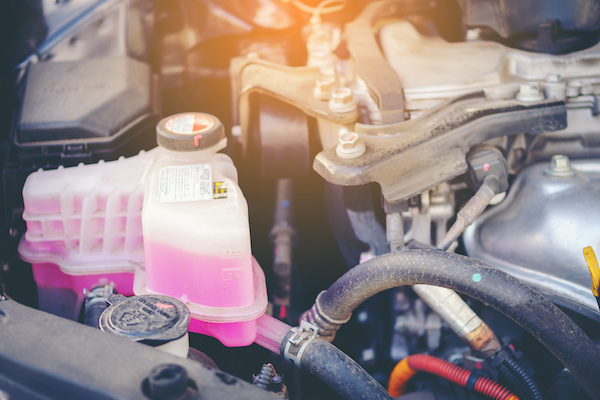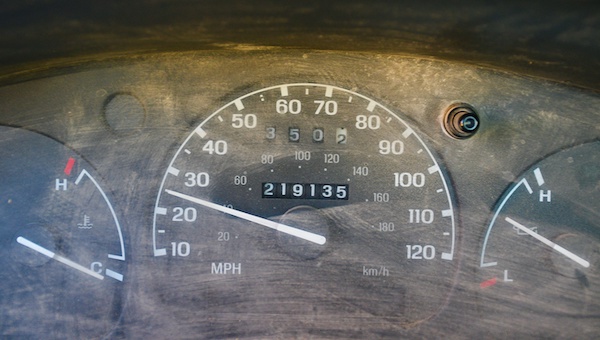Posted on 7/30/2023

Taking care of your vehicle during the summer is essential to prevent breakdowns. We'll look at essential summer tips to help you avoid costly repairs and keep your vehicle running smoothly. How to Keep Your Vehicle in Top Shape You can keep your vehicle performing optimally by performing these activities: 1. Check Your Cooling System The cooling system is crucial during hot weather conditions. Inspect all components, including hoses, for any signs of leaks or cracks. Ensure that the coolant level is adequate and have it flushed if necessary. Consider having a professional mechanic perform a thorough inspection to avoid overheating issues. 2. Monitor Tire Pressure and Tread Depth Hot pavement can cause tire blowouts if they are not properly inflated or have worn-out treads. Regularly check your tire pressure using a reliable gauge and maintain the recommended levels specified by your vehicle's manufacturer. Additionally, inspect the tread depth using a penny test &ndash ... read more
Posted on 6/27/2023
.jpeg)
Car brakes are perhaps one of the most important elements of a vehicle. Good breaks are a need and so are regular brake checks. We've compiled a list of the top 10 most important signs your brakes need to be replaced. 1. Brakes Screeching Screeching noises coming from your brakes is perhaps one of the most obvious signs that it's time to have your brakes replaced. The sound usually means that your brake pads have worn and that your brakes are coming into direct contact with the disc. 2. Soft Brake Pedals Soft brake pedals are another tell-tale sign that a replacement is needed. A good amount of pressure is needed for car brakes to function effectively. The reason for the soft pedals could be a leak or air bubbles in the brake lines. 3. Rigid Brake Pedals Rigid or stiff brakes also mean it's time for a change. In this case the brakes refuse to move no matter the pressure applied. This could be due to malfunctioning brake rotors or brake fluid. 4. Car Vibrations Brake ... read more
Posted on 5/30/2023

When it comes to maintaining the health and performance of your vehicle's engine, one often-overlooked maintenance task can make a significant difference: a coolant flush. The engine relies on a cooling system to prevent overheating and ensure the very best vehicle performance. Over time, the coolant can become dirty with debris, rust, and other harmful substances, compromising its effectiveness. That's where a coolant flush comes in. Here are the top 5 reasons why a coolant flush is an essential maintenance procedure: #1: Efficient Heat Dissipation The primary purpose of coolant is to absorb heat from the engine and dissipate it through the radiator. The coolant can accumulate deposits and debris over time. To get rid of these contaminants, you should get a coolant flush, which involves draining the old coolant and replacing it with fresh, clean coolant. #2: Corrosion Prevention As coo ... read more
Posted on 4/26/2023
.jpeg)
It is often wet during Spring, meaning driving is risky. To drive safely during Spring, you should ensure you properly maintain your vehicle. The following tips should help you take care of your car during the Spring: Spring Cleaning Spring cleaning is not only for your house, it is for your car too. As the ice thaws, a lot of the dirt that accumulated in your car over winter starts to show. A spring cleaning will give your car the aesthetic you want while making it easy to maintain it. Replace The Fluids Fluids solidify during winter, meaning you have to add various elements to make them flow better. These elements are unnecessary during Spring, so replacing the fluids in your car is mandatory. The steering, brake, and washer fluids should all be changed. Also, change the oil and coolant so your engine cools properly. Keep The Battery Running Winter's cold harms a car's battery which is why it will sometimes fail to start. To care for your car during spring, you should r ... read more
Posted on 3/30/2023

If your car, SUV, or truck has over 100K miles on it, you may be wondering how to keep your high-mileage vehicle running smoothly for the latter half of its expected life. While high-mileage vehicles require more maintenance than newer vehicles, proper care can extend the life of your car and save you lots of money in the long run. Here are the top 5 ways to keep your high-mileage car in good shape. Regular Oil Changes Routine oil changes are crucial for any vehicle, but even more so for high mileage cars. As your engine ages, it becomes more susceptible to wear and tear, and regular oil changes help to relieve the wear and tear. Consult your owner's manual to determine how often your car needs an oil change, and stick to that schedule. Keep Watch on Fluid Levels In addition to regular oil changes, it's essential to monitor all of your car's fluid levels, including brake fluid, power steering fluid, and coolant. These liquids should be topped off as needed. Low fluid lev ... read more